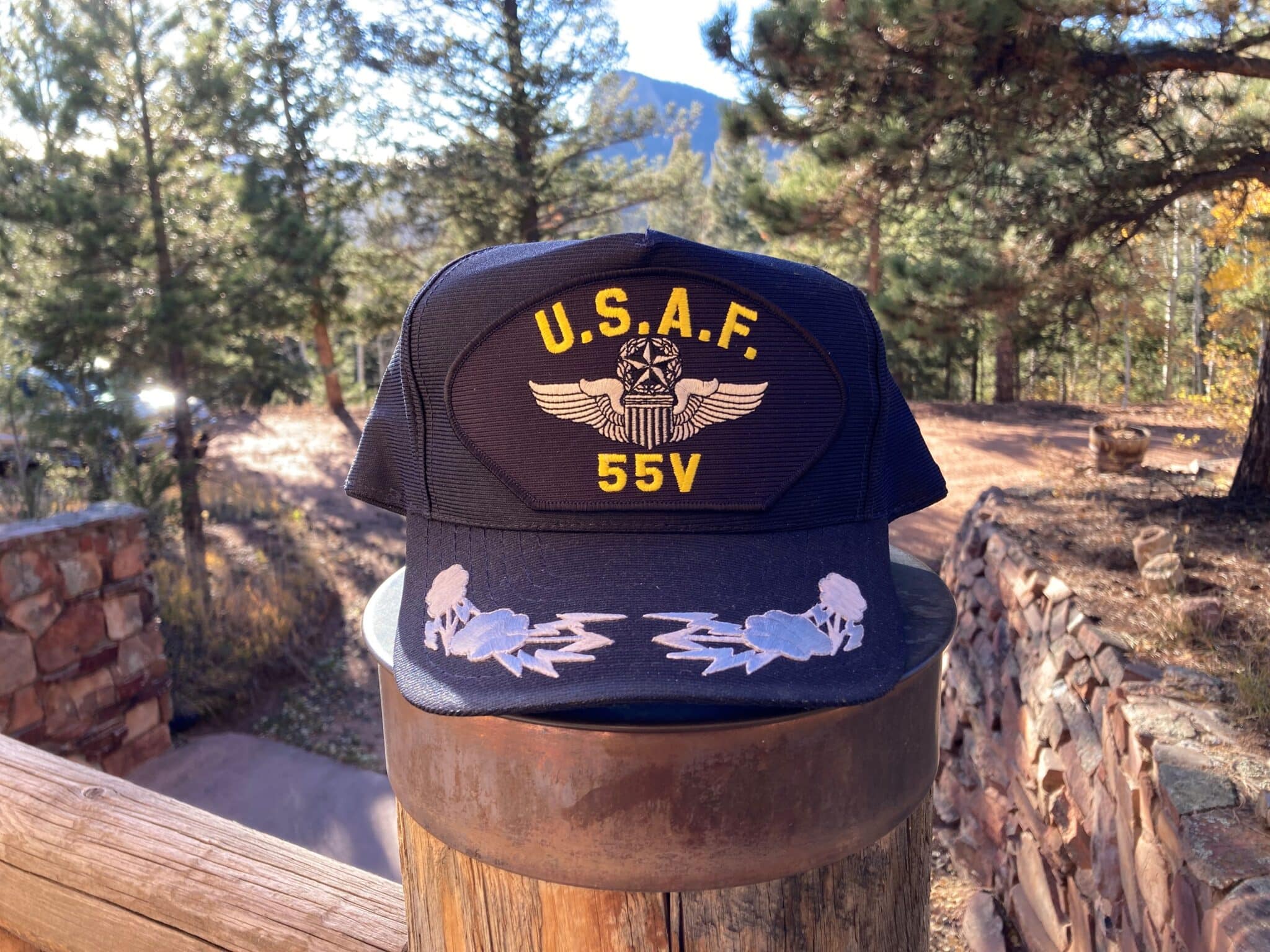I recently had the pleasure and honor to sit down with a United States Air Force Veteran who served during the Cold War between the Korean and the Vietnam Wars. An important reminder that our Veterans serve both in times of peace and times of war. Some see conflict while, others stand ready to protect our country when called. And regardless of when or how they serve, they, and their families, make sacrifices for our country. On this Veterans Day and every day, we honor and respect the discipline, service, and sacrifice of all Veterans.
The US Air Force Veteran has asked to remain anonymous, so we’ll simply refer to him as DW in this article.
DW’s wife was referred for palliative care by their family doctor and received care with Mount Evans before passing away in May of this year. Shortly after, DW entered Mount Evans’ palliative care program. “I was so pleased with Mount Evans and their people, and saw how well they cared for my wife, and I was looking to set myself up for the future. I’ve been trying to remain responsible, even though it’s only me now. It’s also a completely new life,” DW explained. Palliative care focuses on quality of life and helping those with chronic or progressive illnesses manage their symptoms. Our palliative team monitors patients over time and adapts their care to ensure they’re receiving the right care at the right time.
DW grew up in Western Massachusetts where his father worked for his grandfather in the family business, and none of them had gone to college. DW had always had an easy time in school up until college. He attended Worcester Polytechnic Institute in Worcester, MA. DW explains, “The workload in school was a lot, and I never finished my homework. I did well with the practical bits – math, physics, mechanics, but it was an old school engineering program, and I had to take German in my first year. I studied French and Latin and never had problems with languages before, but German floored me. Looking back, I was dragging my heels.”
He continued, “After two years I wondered if I wanted to continue. At the start of my junior year, I went to an Air Force recruiting office to see what was going on. There’d recently been an armistice in the Korean War.” The Air Force recruiter wanted to send him for testing at Fort Drum and Samson Air Force Base in New York. So instead of going to school he went to get tested for a few days. And when he was done, they said, “We can send you to pilot training, or you can be an observer.” He asked, “What’s an observer?” At the time the Air Force was combining the positions of navigator and bombardiers and calling them observers. Without hesitation, DW answered, “I’d like to go to pilot school, thank you.”
So, he finished his first semester of his junior year and then took a little time off before he went into the Air Force the following June. DW explained, “There was no Air Force Academy at the time just the Air Force ROTC.” Half of his class were junior officers just out of college, and the other half were like him, starting as cadets. “It was total immersion and turned out to be right up my alley. Everything I’d learned up to that point was useful, expect the German,” said DW, “I was able to help some of my cadet friends and do well. The best way to learn something is to try to teach it. Within a year and a half, I had my pilot wings.”
Your class rank in pilot training would determine if you went on to advanced training or if you were just going to finish out your tour. The officers typically had a three-year commitment, while the cadets often agreed to a four-year commitment after pilot training. DW pursued advanced pilot’s training along with a four-year commitment. In pilot school he had learned to fly T6 (a World War II-era single-engine advanced trainer aircraft) and B25 (a twin-engine medium bomber). In advanced training, he learned to fly B-29 (a four-engine, long-range strategic bomber) and KC97 (a four-engine, piston-powered strategic tanker). He became a co-pilot and had a crew. He also met his mentor, Bill Todd, who was an aircraft commander and 10-11 years older than him. “He and his wife adopted us. I got married right after pilot training. They already had two kids, and his wife and mine were pregnant at the same time. So, his youngest, and my eldest are the same age.”
Eventually, he and Bill were assigned to Homestead Air Force Base, southwest of Miami. DW explained, “It was Strategic Air Command and a bomber and tanker base. It was also a small WWII airfield being refurbished, and they were in the process of building a long runway, so we couldn’t do our jobs until it was completed.” DW continued, “Bill and I would go and check in and then go to the grocery store for some wine, bread, bologna, and mustard and then go fishing.” Homestead was also a B47 base. DW said, “It was the main deterrent base for the Air Force and had all of the armaments to accommodate personnel and special weapons. I ended up on a top-secret job, which I can tell you about now since it’s been 50 years. I got snatched out of Bill’s plane to work behind a desk, training B47 combat crews to know their atomic and thermo-nuclear bombs. I should have been on combat crew, but the needs of the service take priority over everything else.”
He recalled, “Near the end of those four years, I drove up to Miami to Eastern Airlines and went up to the receptionist in uniform, and said ‘I’d like to speak to the chief pilot’ and within 10 minutes I was sitting down talking about the Air Force. I took terminal leave and went to school for Eastern Airlines. I parlayed my Air Force training and experience; it was not exactly easy, but it was familiar and doable. Then within a year, Eastern furloughed their last few classes. I got a job flying little airplanes, and it was hardly enough to support my family.”
Eastern Airlines Personnel Office would continue to send him prospects, though a number were SCAB contracts for strikebreakers, which he was not interested in doing. Eventually they contacted him and said, “United Airlines wants to know if there’s anyone we’d recommend.” He said, “So I contacted them, and they were hiring second officers. They often used different terminology for pilot and co-pilot like captain and first officer or commander and co-pilot, and so I had to ask what a second officer was. And they explained it was a flight engineer. So, I started as a flight engineer and got on the seniority list for pilot. At United everyone starts at the bottom and works their way up and then they know how everything works.”
That led to 33 years with United. “It gave me a good living for a long time,” he said. And that good living continued down through generations. His son just retired after 40 years as a United pilot and his grandson and his grandson’s wife are also both United pilots. “It shows what military service can mean,” remarked DW.
DW served five and a half years of active duty in the Air Force and then 12 more years of reserve time. “I’m no hero,” declared DW, “all the real heroes are in the ground.”
He continued, “Veterans Day was initially Armistice Day, marking the end of the first World War. Veterans Day should be a serious day, not just a day off. It should be a time to recognize and honor military people and their families. The families always suffer more.”
While we were talking, DW’s Mount Evans Social Worker, Julie Billingham, stopped by. DW said, “Julie is a quizzer – she’s the one that asked me about my military service. Julie’s much more than a social worker. She’s the real deal.”
As part of We Honor Veterans, a program of the National Hospice and Palliative Care Organization in collaboration with the Department of Veterans Affairs, Mount Evans’ team has received veteran-centric education focused on providing “respectful inquiry, compassionate listening and grateful acknowledgment.”
“I find it particularly helpful to ask about a person’s military service no matter what program the patient is in, whether that be home health, palliative, or hospice care. It gives you a window into part of their history, though you always have to respect their comfort-level in discussing their service,” explains Julie.
Before I left, DW invited me inside to show me the breakfast bar in his home that he is finally using as he intended when his cabin was built. It’s a glass top with photos of his family displayed underneath. As he proudly pointed out his kids, grandkids, and great grandkids, he told me he knows he’s lucky and you could see how grateful he is for his beautiful family. There are plenty of photos of the multi-generation pilots and one that stands out. It was DW in the captain seat looking directly at the camera, full of joy and exactly where he was meant to be.




Just an excellent and touching story. Thank you for sharing the story of DW, as well as that of his “brothers”. We salute you, sir, and all of your Air Force gang, as well as your flying family members!
Thank you for your service to our country.
Thank you, Bruce for your kind words. We’ll be sure to share them with DW.